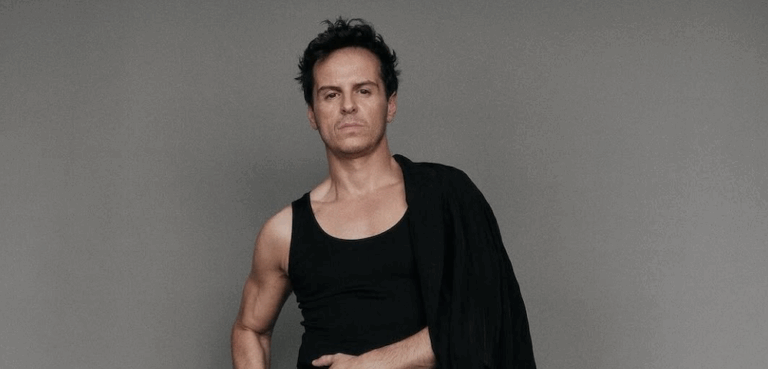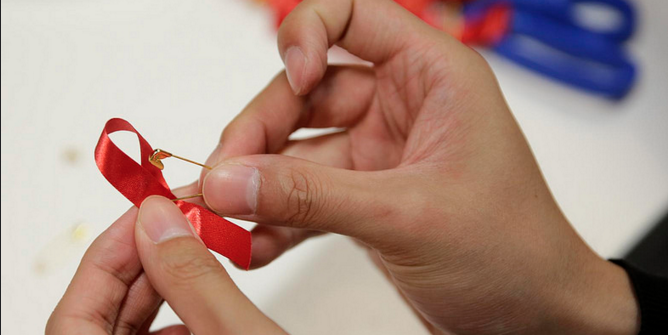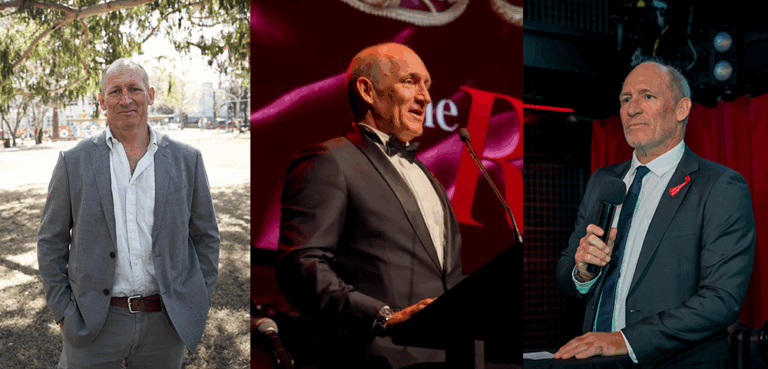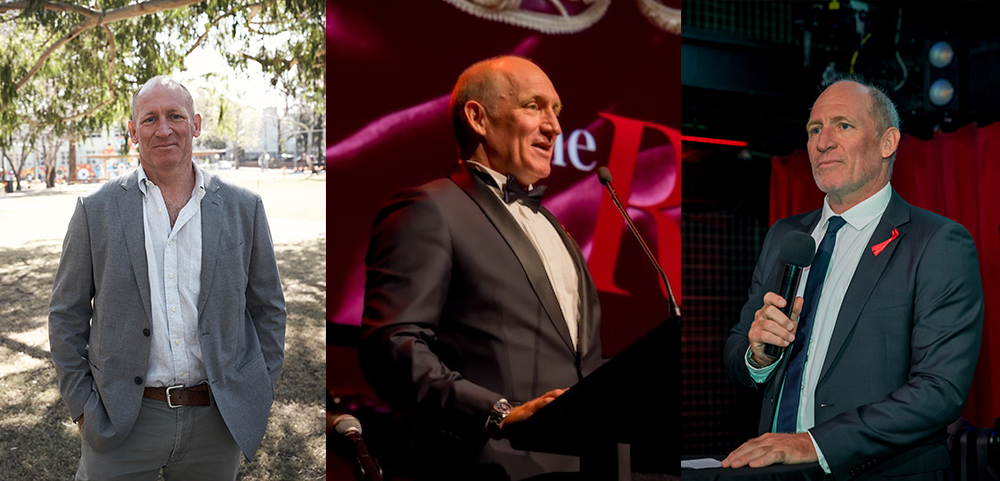
Tremor of an epidemic
The US Center for Disease Control (CDC) published a report on June 4, 1981 which has gone down in history as the first published description of what would later become known as Acquired Immune Deficiency Syndrome (AIDS). The world would later learn that AIDS was caused by the previously unknown Human Immunodeficiency Virus (HIV).
The report in the CDC’s Morbidity and Mortality Weekly Report reported five cases in the space of eight months of sexually active young gay men in Los Angeles who had come down with a kind of fungally-caused pneumonia usually only associated with people with weakened immune systems, and who shared two other diseases.
“In the period October 1980 – May 1981, five young men, all active homosexuals, were treated for biopsy-confirmed Pneumocystis carinii pneumonia at three different hospitals in Los Angeles, California,” the report read.
“Two of the patients died. All five patients had laboratory-confirmed previous or current cytomegalovirus (CMV) infection and candidal mucosal infection.”
Patient One was a previously healthy 33-year-old who developed Pneumocystis pneumonia and oral thrush caused by the candida yeast in March 1981 after two months of fever associated with elevated liver function, a drop in his white blood cell count and infection with CMV.
Patient One’s health continued to deteriorate despite being administered a range of drugs. He died on May 3.
Patient Two was a previously healthy 30-year-old man who had developed Pneumocystis pneumonia in April 1981 after five months of fever while infected with CMV. He also displayed elevated liver function and was also found to have low levels of white blood cells and oral thrush. Patient Three was still alive at the time of publishing.
Patient Three was 30 years old. He had developed a thrush infection of the mouth and aesophagus in January 1981.
He was given anti-fungal drugs and appeared to recover but in February he was hospitalised again, suffering from Pneumocystis pneumonia. The thrush in his aesophagus soon returned. A biopsy confirmed he too was suffering from CMV.
Patient Four had been diagnosed with Hodgkin’s lymphoma, a cancer of the lymph nodes originating in the body’s white blood cells, three years earlier but had been successfully treated with radiation therapy. Today we know that HIV infection carries with it a heightened risk of Hodgkin’s lymphoma.
He too developed Pneumocystis pneumonia and died despite being given medication to treat it. A post-mortem found no evidence of Hodgkin’s lymphoma having returned but the man was found to have had CMV.
Patient Five had been a healthy 36-year-old before being diagnosed with a CMV infection in September 1980. He returned to hospital in April 1981 after four months of fever, shortness of breath, and coughing.
He was found to have oral thrush, Pneumocystis pneumonia and a CMV-caused inflammation of the retina. He was given drugs and was still alive at the time the CDC report was published.
“The patients did not know each other and had no common contacts or knowledge of sexual partners who had similar illnesses,” the report noted.
“The five did not have comparable histories of sexually transmitted disease.”
All of the men reported using poppers and one had been an injecting drug user, but only two reported leading very promiscuous sex lives.
Because of HIV’s long incubation period, the virus could have been in the country since the early 1970s.
An editorial note accompanying the report rang the alarm bells.
“Pneumocystis pneumonia in the United States is almost exclusively limited to severely immunosuppressed patients,” it read.
“The occurrence of Pneumocytosis in these five previously healthy individuals without a clinically apparent underlying immunodeficiency is unusual. The fact that these patients were all homosexuals suggests an association between some aspect of a homosexual lifestyle or a disease acquired through sexual contact and Pneumocystis pneumonia in this population.
“All of the above observations suggest the possibility of a cellular-immune dysfunction related to a common exposure that predisposes individuals to opportunistic infections such as pneumocystosis and candidiasis.”
The note warned that Pneumocystis carinii infection in previously healthy gay men should now be considered a differential diagnosis when coupled with shortness of breath and pneumonia.
The CDC Center for Infectious Diseases’ Parasitic Diseases Division had already begun to document similar unusual cases of Pneumocystis carinii pneumonia in New York when it were alerted to the five patients. In the month following the report, the CDC formed a Task Force on Kaposi’s Sarcoma and Opportunistic Infections.
A peer-reviewed paper on the new syndrome appeared four months later.
By the end of 1982, scientists believed there was strong evidence that the syndrome, which had first been termed Gay-Related Immune Deficiency (GRID), was caused by an agent spread via both heterosexual and homosexual sexual contact and through intravenous drug use and blood products.
Cases were also identified among women who had AIDS or were deemed at risk of the virus, and babies born to them.
That meant everyone was now at risk and the taskforce renamed the syndrome Acquired Immune Deficiency Syndrome.
Almost two years after the first cases were reported, the US Public Health Service recommended that people avoid sexual contact with people known or suspected of having AIDS and that persons of increased risk for AIDS refrain from donating blood.
In 1983 American and French research groups led by Robert Gallo and Luc Montagnier respectively indicated that a retrovirus was the cause of AIDS. The groups published their findings in the same issue of the journal Science.
Scientists would later trace the virus back to Africa, where most people living with the virus live today, by way of Haiti.
It is now believed the virus passed to humans from chimpanzees through infected blood getting into cuts on the bodies of people hunting bush meat.
The US Food and Drug Administration (FDA) in March 1987 approved AZT as the first antiretroviral drug to be used as a treatment for AIDS.
The second drug for the treatment of AIDS, dideoxyinosine, was made available to people with AIDS in October 1989, even though only preliminary tests had been completed. A third drug, dideoxycytidine, became available in 1991.
The following year the FDA approved the first combination therapy.
In 1996 the FDA approved the drug nevirapine, one of a new class of drugs known as non-nucleoside reverse transcriptase inhibitors (NNRTIs). Viral load tests were introduced the same year, providing information about the progression of the disease.
The situation for people living with HIV improved sharply, with new anti-retroviral combinations taking people from hospital beds and returning them to their homes, and for many, to their jobs as well.
Since that first report in 1981 an estimated 35 million people worldwide have been infected with the virus and an estimated 2 million people continue to die from it each year.
But 30 years after that first CDC report, American Timothy Ray Brown became the first person in the world to be declared HIV-free after being infected by the virus.
Dubbed the “Berlin Patient”, Brown had been suffering from leukaemia along with HIV. He received radiation therapy in 2006, which killed off large numbers of his immune cells.
He then had a bone marrow transplant from a compatible donor with a genetic mutation that provides HIV immunity possessed by just one in 1000 people of European ancestry.
Brown’s new marrow began producing HIV-immune blood cells and he was taken off medication for the virus.
Eventually all of his non-HIV-immune cells died, leaving only the healthy ones.
The procedures Brown underwent required long periods of extreme discomfort, caused him neurological damage and carried a high risk of complication, including death. These factors, coupled with the rarity of compatible donors with the mutation, mean this procedure is unlikely to be repeated.
But breakthroughs like this mean we can now realistically hope to see a cure in our lifetime.
Why we need a cure more than ever
DR ELLY KATABIRA
PRESIDENT
INTERNATIONAL AIDS SOCIETY
Thirty years ago this month, health agencies in the US began monitoring unusual clusters of diseases that would later be identified as the first cases of AIDS.
A year later, a young medical officer working at a health centre documented and reported to the Ministry of Health the first cases of AIDS in Uganda found on the shores of Lake Victoria in the Rakai district.
Over the past three decades, I have worked extensively in the field of care and support for people living with HIV, watching the story of AIDS unfold in my own country and around the world. I have witnessed some of the devastating consequences of silence and stigma, as well as the incredible results that translating scientific evidence into action can produce.
Today, HIV experts agree that ‘prevention’, ‘treatment’ and ‘care’ are the three pillars to successfully responding to the HIV epidemic. Lessons learnt, and in particular the compelling new evidence that HIV treatment is also HIV prevention and that expanding antiretroviral therapy (ART) coverage has preventative benefits for the entire community, also show us that these three pillars must not be approached separately, but as three interconnected efforts.
Here at the International AIDS Society (IAS), however, we are convinced that the three pillar approach to ending the HIV epidemic is incomplete. To mark this historic month, the IAS is calling for the addition of a fourth pillar — ‘cure’ — to the international response to the HIV epidemic.
Under no circumstances should the inclusion of ‘cure’ into the global response direct funding away from treatment, prevention and care programs. The IAS will continue to advocate for increased funding across each of these pillars. The IAS does believe, however, that it is imperative that donors, governments and the AIDS community make a viable economic investment in HIV cure research, and right now.
Globally, there are currently 33.3 million people living with HIV. Although significant progress has been made towards scaling up access to antiretroviral treatment, the increase in new infections in certain regions, a decrease in funding, and the fact that under new World Health Organisation guidelines HIV patients should start their treatment regimens much earlier, mean that universal access targets are way off track.
As new infections continue to outstrip numbers on treatment by two to one in resource-limited settings, the scale of unmet need can only increase.
Furthermore, while ART has greatly improved the quality of life of people living with HIV and reduced AIDS-related mortality rates, the virus remains persistent in certain cells even in patients being successfully treated. In turn, patients have no option but to undertake lifelong treatment to keep the virus under control. Lifelong adherence to these drugs remains both costly and tiring for the patient, while side effects associated with ART usage can be severe.
Lastly, resistance to treatment can occur for a number of reasons.
Funding research to develop a functional or sterilising cure for HIV which could offer people living with the virus an alternative to the burden of a difficult lifelong ARV regimen is therefore not only important for the health and human rights of people living with HIV, it is in our collective economic interest.
Professor Françoise Barré-Sinoussi, co-discoverer of HIV, Nobel Laureate and IAS president-elect, is currently guiding the development of a global scientific strategy, Towards an HIV Cure.
This strategy aims to build a global consensus on the state of the art research in the field of HIV reservoirs and to define scientific priorities that must be addressed to tackle HIV persistence in patients undergoing treatment, the key hurdle impeding any alternative to long-term therapy.
Thirty years after the first cases of AIDS, if we are ever to envisage the remission of the disease in infected individuals, or even the eradication of the virus, then we must invest in and aggressively pursue an HIV cure.
Thirty years of partnership in the fight against HIV
ROB LAKE
EXECUTIVE DIRECTOR
AUSTRALIAN FEDERATION OF AIDS ORGANISATIONS
Australia’s response to HIV is recognised around the world as an outstanding success in limiting transmission, providing treatment and in cooperation between government, affected communities, doctors and researchers.
This resulted from a grassroots partnership approach beginning with affected communities working together — a model that continues to work in this country today.
In 1981 reports of the first AIDS cases began to filter through to Australia from the US. The first case of HIV here was diagnosed in 1982.
No one understood the mode of transmission for this new illness that seemed to disproportionately affect gay men.
A climate of fear was fuelled by this uncertainty, while sensationalist media, church leaders and politicians stigmatised the affected as deviants who brought the illness on themselves. Hospitals and health workers refused to treat HIV-positive patients.
Fear was rife and the gay and lesbian community recognised that if we didn’t care for ourselves no one else would. “Everywhere we looked, the men we danced with, we fucked with, loved, were disappearing,” Dr Garrett Prestage remembered, reflecting on this period.
Fears in the general community about the safety of blood donations added to this. Until effective tests became available to screen blood donations, people with haemophilia were at risk of acquiring HIV through transfusions, and a significant number of them did.
Although gay men were disproportionately affected, they did not respond alone. Lesbians and heterosexuals were involved from day one, supporting and caring for sick and bereaved friends when no one else would.
Sex workers and drug user communities mobilised alongside gay men and lesbians in organising a public response against the climate of hostility and fear. During Mardi Gras 1985, the very first safe-sex campaign was launched at a gay men’s sauna, the Roman Bath.
Social groups rallied together to care for the sick in the absence of sufficient clinical care. Community groups like the Bobby Goldsmith Foundation and Community Support Network were formed in Sydney and in other cities around Australia.
’Ordinary’ lesbians, gay men, drug users and sex workers began to address the epidemic before governments got involved. These people were pioneers in the response and HIV/AIDS became a catalyst for the formation of organisations such as ACON, Positive Life NSW, VAC, NAPWA, AFAO and for safe-sex education and condom-use campaigns. Community organisations, including later ACT UP, ultimately carried the message that care for people with HIV and AIDS was a human right.
Around this time, AIDS councils, sex worker organisations and drug user organisations began to be established around the country, helping give communities a wider voice and disseminating information and education about safe sex and safe drug use.
The (first) National Advisory Committee on AIDS (NACAIDS) was formed in 1984.The involvement of politicians and bureaucrats in building on the work of our grassroots community mobilisation was a turning point in confronting HIV in Australia.
In the 1980s and 1990s, Australia’s partnership response resulted in law reform across a broad range of areas. Laws supporting needle and syringe programs were first introduced in 1987. By the mid-1990s state and territory governments had decriminalised much of the sex industry. Sex between men was legalised in South Australia in the mid-’70s, however, it remained illegal in many other states until the 1990s.
In the early 1990s, the Victorian AIDS Council (VAC) produced a safe-sex campaign featuring two young gay men kissing with the tagline “When you say yes … say yes to safe sex”.
The sex-positive message was that gay sex was natural and “if you’re safe you’ll have a great time”. This caused such controversy that government funding for the VAC was reduced the following year.
Health promotion messages such as this continue to prompt controversy.
In 2010, federal and state governments released the sixth National AIDS Strategy, developed with the active involvement of affected communities.
There remains, however, a continuing need to develop and fund improved HIV treatments that bring better health for people with HIV. That is a key challenge going forward.
In 2011, we must also recognise the need to bring new tools into our work, rapid testing, community-wide and targeted messages to promote safe sex and education about risk reduction, as well as new research into prevention.
But most of all we need to remind our communities that HIV is still here and needs our attention.
Charity and HIV in Australia
GREG GAHL
CEO
AIDS TRUST OF AUSTRALIA
Preventing HIV transmission and supporting people living with HIV has always involved a raft of social, cultural, religious, political, legal, geographic and economic challenges.
Globally, 7000 people become HIV positive each day. UNAIDS is concerned that HIV has lost visibility in rich nations and this threatens ongoing support for programs that should be driving down the number of HIV transmissions.
In developing nations the delivery and continuation of anti-retroviral (ARV) treatment and community-based health and wellbeing programs is at risk. Entire populations face human and economic inertia and decline.
In developed nations, where ARV treatment is more assured, and where core community-based health and wellbeing programs are supported, the extension of these programs and development of new initiatives in response to emerging concerns are risked.
Australia has led the world in HIV-related care, support, awareness, prevention and research programs. Yet even in Australia, transmissions have increased — this time last year there were 20 new diagnoses of HIV each week. Now there are 21.
Prevalence modelling out to 2020 suggests that, without additional investment, the outlook for HIV in the Australian community will be disappointing and in some cases alarming.
HIV in Australia, as in much of the developed world, has lost visibility as a cause for concern. Against a backdrop of significant global economic change, attention has been drawn away from what remains a global health crisis at a time when emerging concerns challenge already stretched frontline services. In the developed world, HIV has shifted from being a death sentence to a life sentence. Replacing the drama of death with the perception of long-term manageable condition masks the true human, social and economic cost of HIV in the community.
Although its face has changed, HIV is still here.
More people than ever before are living with HIV and there is an increasing need to support them.
The first case of AIDS was diagnosed in 1981. Australia was swift to act. Key at-risk groups quickly formed to gain political recognition of their concerns and to serve the needs of their affected communities. These groups developed and matured into strong non-government organisations (NGOs) responding to evidence-based need and successfully delivering a broad range of HIV and related health and wellbeing services.
The AIDS Trust of Australia was formed in 1987, by the then Governor-General, in response to growing concerns about HIV and AIDS in the community. It was formed as the national point of focus for charitable expression in relation to HIV and AIDS. Since then some $7,000,000 have been distributed in support of approximately 200 diverse projects directly related to HIV.
These days, community-based charitable fundraising is undertaken by NGOs, like ACON in NSW and the Victorian AIDS Council, which have significant and developed relationships with the communities they serve.
The Trust aligns its fundraising objectives with the needs of these organisations to leverage existing capacity, skill and momentum, and maximise the effectiveness of donor contributions. We identify funding gaps in national HIV sector programs and services and raise funds against them.
Our major projects are community-operated and delivered, foster the link between evidence and change, and are focused on HIV prevention. These projects are the subject of individual and corporate philanthropic relationships.
Our current projects relate to emerging concerns among remote, rural and regional youth; travellers and highly mobile workers; and Aboriginal and Torres Strait Islander communities.
Because HIV is still here, because HIV requires a growing, changing and complex response across Australia and because more people than ever before are living with HIV, more money is needed.
Charitable participation by people everywhere is essential to bridge the gap between the existing resource and what is actually required. Wherever you are reading this, a community organisation needs your help.
You can contribute time or money. You will be helping to refresh awareness of HIV, to prevent HIV transmission and to support the delivery of services to those affected by HIV nationally. Your participation will be most warmly received.
People with HIV making themselves heard
ROBERT MITCHELL
PRESIDENT
National Association of People Living with HIV/AIDS (NAPWA)
At the United Nations from June 8-10 a UN General Assembly Special session on HIV/AIDS is being held — 30 years after the first reports of a new disease back in June 1981.
At this meeting, the world will come together to review the progress of the global HIV response since the original UN Declaration on HIV/AIDS was endorsed 10 years ago, and consider its priorities for the next decade.
The representation of people living with HIV will have a strong presence both in external activities and in all the formal country government delegations — including Australia’s.
The idea that the personal experiences of people living with HIV could and should help to shape the response to the AIDS epidemic was first voiced in 1983 at a national AIDS conference in the US.
In Australia, this same idea was a rallying cry for HIV positive people at the 1988 National AIDS Conference in Hobart where 20 activists took to the stage and demanded that HIV positive people be represented in this country’s response. This was the first time in Australia that a group of people stood up and self-identified as being HIV positive.
Their action led to the establishment of the National People Living With AIDS Coalition (NPLWAC), an advocacy organisation with the primary mission of increasing HIV positive representation on a national level and which could represent state and territory-based groups more formally across national HIV strategic responses.
In the early 1990s, that body was renamed NAPWA, and advocacy was shaped around those obvious issues of clinical trials, treatment developments, and deaths.
There were angry voices, frustrated at the lack of access to treatments available overseas. These same positive voices spoke with authority and confidence when lobbying government — and eventually those voices were heard.
The 1991 Baume report meant that life-saving drugs could now be fast-tracked for access and that the bodies responsible for approving drugs in Australia, in addition to evaluating the quality, safety and efficacy of drugs, would also prioritise their availability under arrangements that recognised that a person had the right to choose an experimental treatment when faced with a life-threatening disease and very little time.
Unfortunately, the agents available in these years were still insufficient and many of us continued to get sick and die. It wasn’t until 1996 when protease inhibitors joined the HIV treatment arsenal and combination therapy became the norm that most people with HIV stopped advancing to AIDS.
This was when the activism began to quieten and many people started to rebuild their lives.
It was also when “hit hard, hit early” became a catchcry of many treatments advocates and combinations of different antiretroviral drugs were developed to try and maximise the punch to slow the progression of the disease. Instead of succumbing to opportunistic infections, HIV positive people were regaining control over the virus, but often experiencing debilitating side effects from their medications.
Over the years NAPWA has widened its lobbying of government to include broader health and social policy issues affecting people with HIV. But HIV treatment issues, including clinical research priorities and new scientific discoveries, remain the forefront of our work.
Today, challenges include focusing on better ways to manage living with the virus as people are living longer, getting older, and preparing for a new world of vaccine developments and attempts to trial HIV cure approaches.
This year’s UN meeting will discuss HIV prevention, treatment, care and support programs against the sobering reality that 33.3 million people live with HIV globally, 10 million people are waiting for treatment, and for every person starting treatment, two others become infected.
At the Paris AIDS Summit in 1994, 42 countries — including Australia — declared the Greater Involvement of People Living with HIV and AIDS (GIPA) to be critical to ethical and effective national responses to the epidemic. NAPWA’s involvement at all levels of the Australian response to HIV is an expression of the GIPA principle, and today the GIPA is the backbone of many interventions worldwide.
People living with or affected by HIV are involved in activities at all levels — appearing on posters, giving personal testimony, supporting and counselling others, participating in policy-making.
The Australian delegation to the UN meeting this month is being led by Foreign Minister Kevin Rudd and includes several people living with HIV.
From historical tales to the future course of the HIV response, people living with HIV will define how progress is understood and accelerated across the globe in diverse ways that speak to the human condition, and by the meaningful extension of life itself.
Thirty years of science in the fight against HIV
PROFESSOR ANDREW GRULICH
HIV EPIDEMIOLOGY AND PREVENTION PROGRAM HEAD
THE KIRBY INSTITUTE
In 2011, as the gay community marks 30 years of HIV, the Kirby Institute for Infection and Immunity in Society marks two very significant events of our own.
This year, we celebrate our 25th anniversary of working in HIV research, and a transition from our old name, the National Centre in HIV Epidemiology and Clinical Research.
Funded as part of the Australian Government’s response to HIV in 1986, the centre and its staff have lived through all phases of the epidemic, from the hopelessness and despair of the ’80s and early ’90s to today’s optimism, and all the way we have worked in close partnership with the gay community. Our change in name reflects the fact that as the HIV epidemic came under control, we have broadened our work to include other infectious diseases, particularly viral hepatitis and sexually transmitted diseases.
We now work in improving the health of other marginalised populations such as injecting drug users and prisoners. Commencing with gay men, we have always worked in partnership with those most affected by HIV, to benefit them and their communities. With respect to gay men, we now work more broadly in other health challenges, such as in anal cancer prevention.
We are privileged that Justice Michael Kirby, who has championed a human rights-based approach to health, has agreed to lend his name to our institute’s work.
Over the years, our insitute’s researchers have been centrally involved in some of the most significant breakthroughs in HIV research and none of this could have been achieved without a true partnership with the gay community.
Clinician researchers in Sydney were the first to identify the seroconversion illness associated with HIV. Through the insitute’s links with international researchers, we continue to facilitate the access of Australians with HIV to the latest treatments in clinical trials. These trials have helped answer the key questions about how to prevent HIV from destroying the immune system, and have paved the way to the highly effective therapies we have today.
Epidemiologists and statisticians at the centre have tracked the epidemic, and predicted its course to ensure that community and policy-makers have been armed with accurate data to allow the best policies in HIV prevention.
In collaboration with the gay community, we have described the complex and multi-faceted response of gay men to HIV, including the complex risk reduction behaviours which men have successfully used to avoid HIV infection. Our laboratory scientists have studied the virus in close-up, producing important insights which will help in the eventual design and deployment of a vaccine and even more effective treatments.
Where will the next 30 years of HIV take us? Our first challenge is to ensure that the millions of people with HIV in the developing world who are in urgent need of therapy today, mainly in sub-Saharan Africa, actually receive it. Without an increased roll-out of HIV therapies, millions of people with HIV in these countries will die.
The cost of HIV medications in these countries has been reduced greatly, in many cases to less than $100 per person per year, but even this remains out of reach without a substantial increase in coordinated investment by donor nations. Reducing the cost of HIV therapy is a focus of research at the institute.
Developed nations such as Australia face a different set of challenges. For the first time, HIV disease will interact on a large scale with diseases of ageing. It appears that people with HIV have higher rates of a variety of diseases of ageing, including heart disease and some cancers. Ongoing investment is needed to ensure that viable treatment options will be developed even for those people who develop viral resistance to many of the available drugs.
A current controversy exists about whether people with HIV should be treated soon after infection or — as is currently the case — should be monitored for a few years until the damage to their immune system develops. The last few years have seen a glimmer of hope for the long hoped-for cure, but for the foreseeable future, lifelong therapy of HIV disease will still be required.
In HIV prevention, there is an increasing range of biomedical options such as pre-exposure prophylaxis and HIV treatment as prevention. However, these bring with them complex challenges. None is 100 percent effective, so condom use with sexual partners who are potentially of the opposite HIV status will remain important.
We must be on guard against the perception that getting HIV is not that important — even though we have got much better at preventing severe illness, it still requires a lifelong close adherence to a daily regime of pills.
The Kirby institute at the University of New South Wales stands ready to play its part in the evolving response to HIV and related diseases.
We salute and honour the memory of the thousands of members of Australia’s gay community, including several much-loved and highly talented members of our staff, who have died. We look forward to working in collaboration with the gay community towards a day when HIV will be nothing but an awful memory.
DOWNLOAD THE ENTIRE FEATURE:
30 Years of HIV










Silence = Death.
Complacency = Danger.
Safe sex every time.
“It is now believed the virus passed to humans from chimpanzees through infected blood getting into cuts on the bodies of people hunting bush meat.” – believed by who? how do you substantiate this one?
And the band plays on.
I’m sitting here in 2011 crying over a scientific report about a disease that is now older than most of the people whose life it stole.